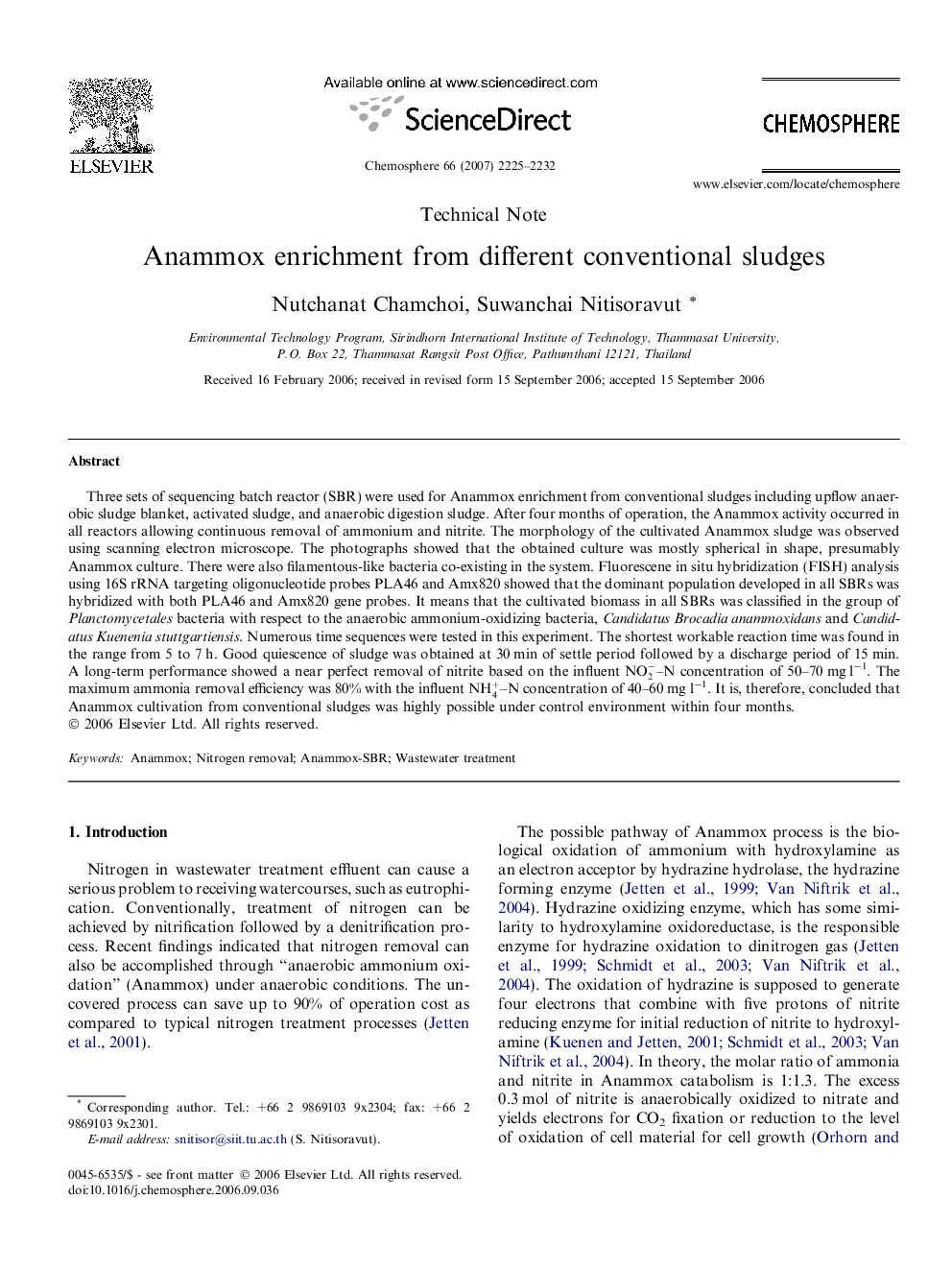| Article ID | Journal | Published Year | Pages | File Type |
|---|---|---|---|---|
| 4415998 | Chemosphere | 2007 | 8 Pages |
Three sets of sequencing batch reactor (SBR) were used for Anammox enrichment from conventional sludges including upflow anaerobic sludge blanket, activated sludge, and anaerobic digestion sludge. After four months of operation, the Anammox activity occurred in all reactors allowing continuous removal of ammonium and nitrite. The morphology of the cultivated Anammox sludge was observed using scanning electron microscope. The photographs showed that the obtained culture was mostly spherical in shape, presumably Anammox culture. There were also filamentous-like bacteria co-existing in the system. Fluorescene in situ hybridization (FISH) analysis using 16S rRNA targeting oligonucleotide probes PLA46 and Amx820 showed that the dominant population developed in all SBRs was hybridized with both PLA46 and Amx820 gene probes. It means that the cultivated biomass in all SBRs was classified in the group of Planctomycetales bacteria with respect to the anaerobic ammonium-oxidizing bacteria, Candidatus Brocadia anammoxidans and Candidatus Kuenenia stuttgartiensis. Numerous time sequences were tested in this experiment. The shortest workable reaction time was found in the range from 5 to 7 h. Good quiescence of sludge was obtained at 30 min of settle period followed by a discharge period of 15 min. A long-term performance showed a near perfect removal of nitrite based on the influent NO2-–N concentration of 50–70 mg l−1. The maximum ammonia removal efficiency was 80% with the influent NH4+–N concentration of 40–60 mg l−1. It is, therefore, concluded that Anammox cultivation from conventional sludges was highly possible under control environment within four months.
